
How Hong Kong-style milk tea became part of local culture
Super strong, drawn through a silk stocking four times, served with a splash of evaporated milk, the traditional drink with colonial roots has been energising Hongkongers of all types since the second world war

For as long as Hong Kong food writer Emily Tong Lai-fong can remember, she’s been eating at Wai Kee Noodle Café near her childhood home in Sham Shui Po. Wai Kee started serving the community as a dai pai dong (open-air food stall) in the 1950s.

In the short time we’ve been here, there’s been a fast turnover of customers shuffling in and searching for a spare plastic stool. Sitting shoulder to shoulder around five foldable round tables, people scoff down dishes such as pork liver noodles, ordered from wall-mounted menus with red Chinese characters. Despite being strangers, one thing they have in common is their drink of choice.
Known as yeet lai cha (hot milk tea), Hong Kong milk tea has a rich, hearty flavour. It’s made creamy with the addition of evaporated milk, and packs a long-lasting tannin punch from the carefully steeped and “pulled” mix of tea leaves. “It’s a comfort drink,” says Tong, who is in her 40s, adding she drank it daily as a child.
Milk tea is a staple for many Hongkongers; its sweetness making it palatable for all ages, despite its high caffeine levels. It is firmly part of the city’s eating out culture. Due to the complexities of making it, however, Tong says it is “near impossible to make a good one at home”.
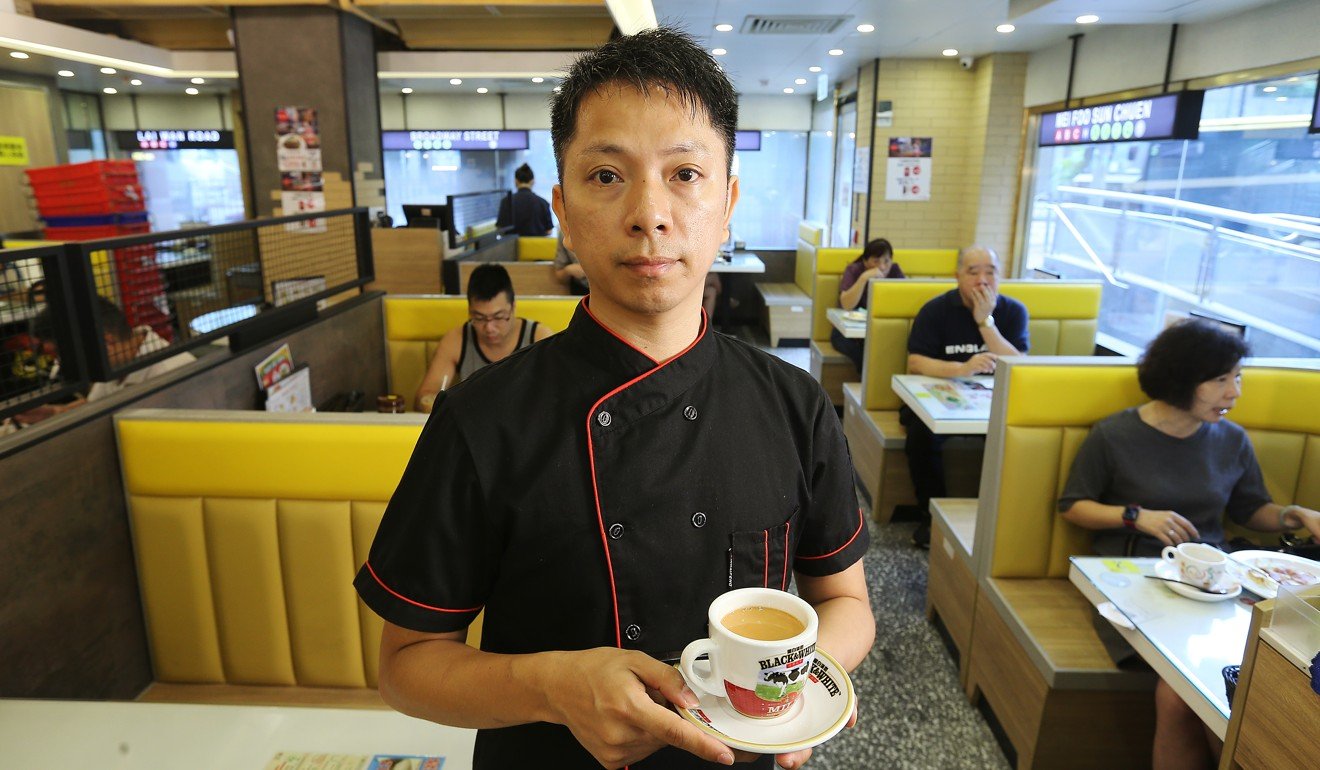
Bing sutt (ice café), cha dong (tea house) and dai pai dong specialised in selling affordable variations of Western dishes for locals. Tse says the ingredients of the British tea were “localised” and adapted to Hongkongers’ tastes. Regular milk was replaced with the evaporated milk that is still used today (many tea makers say Black&White evaporated milk makes the smoothest cuppa), and a stronger blend of tea leaves were chosen.
“In the 1940s, there were many labourers. They worked very hard and used a lot of energy. So they needed something strong to replenish their energy,” Tse says.
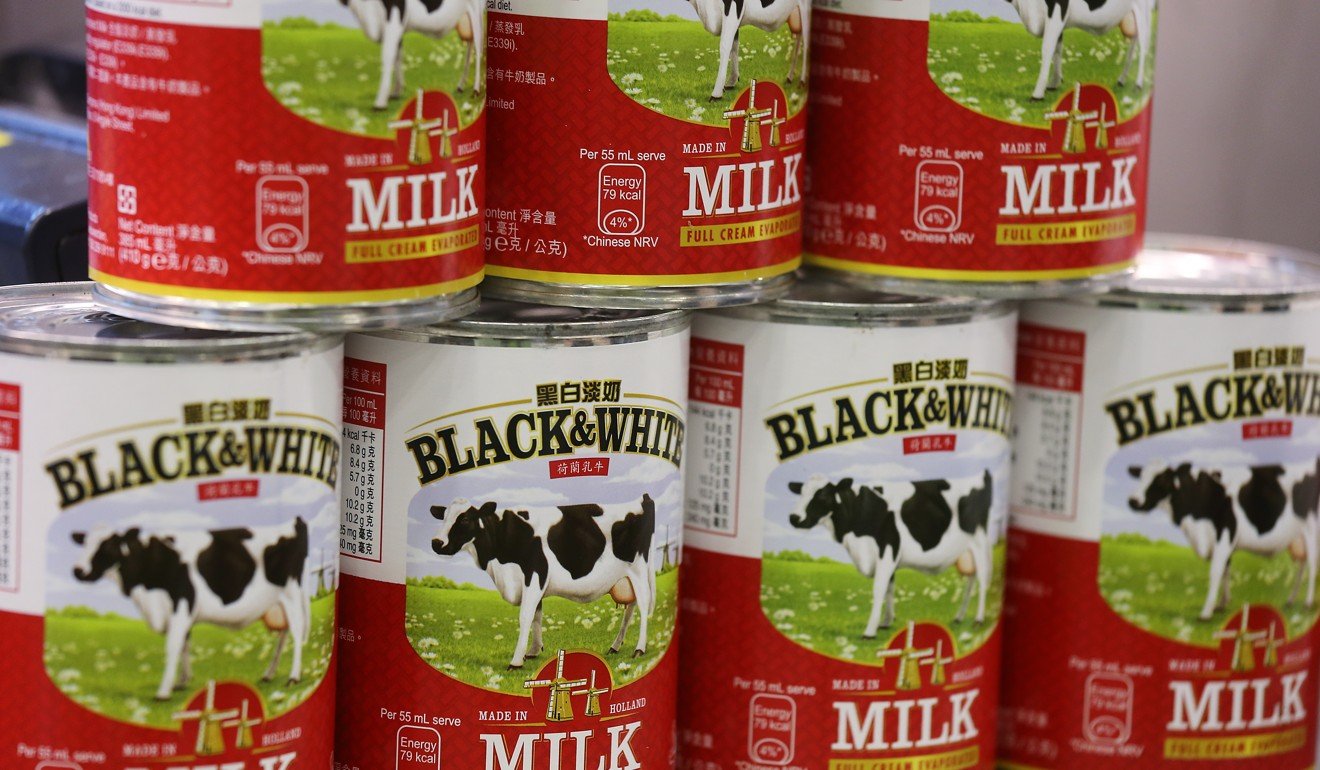
Nowadays, milk tea can be found at most restaurants, and is drunk by people of all ages and economic means, and is included on Hong Kong’s “intangible cultural heritage” list. There are two types of milk tea: the original style using evaporated milk, where consumers add their own sugar, and one made with naturally sweet condensed milk.
Tse has spent almost 10 years perfecting his milk tea. He started his career as a tea salesman, and began studying Hong Kong brewing techniques before eventually moving on to honing his palate as a tea master, experimenting with different blends.
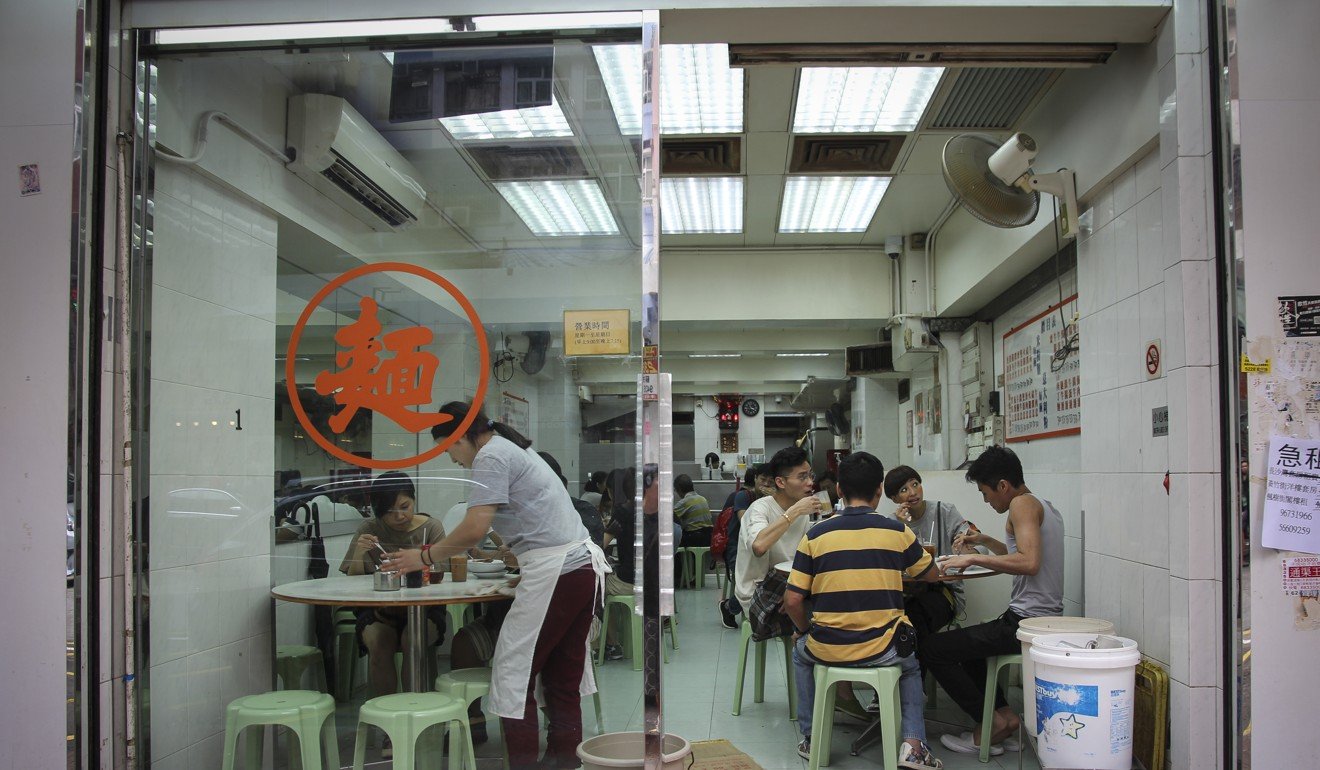
In the 1940s, Tse explains, locals did not only change the type of milk used, but also the tea leaves, to ensure a strong, highly caffeinated hit. Milk tea is made from a blend of several different black teas.
Each cha chaan teng has its own secret blend, altered slightly from a standard ratio, aiming to make the best tea in town. In its standard form, milk tea comprises 30 per cent Broken Orange Pekoe (BOP) leaves, which contribute to the aroma, 30 per cent BOF Fannings, which gives a deep reddish/brown colour, and 30 per cent Dust, which contributes to the strong taste. The final 10 per cent is Lipton (BOP and Ceylon) tea, which enhances the aroma and texture.
Brewing the tea involves more than letting it steep in hot water for a few minutes. It is a complicated process that involves exact temperatures and “pulling the tea” through a silk stocking four times to enhance its flavour and colour.
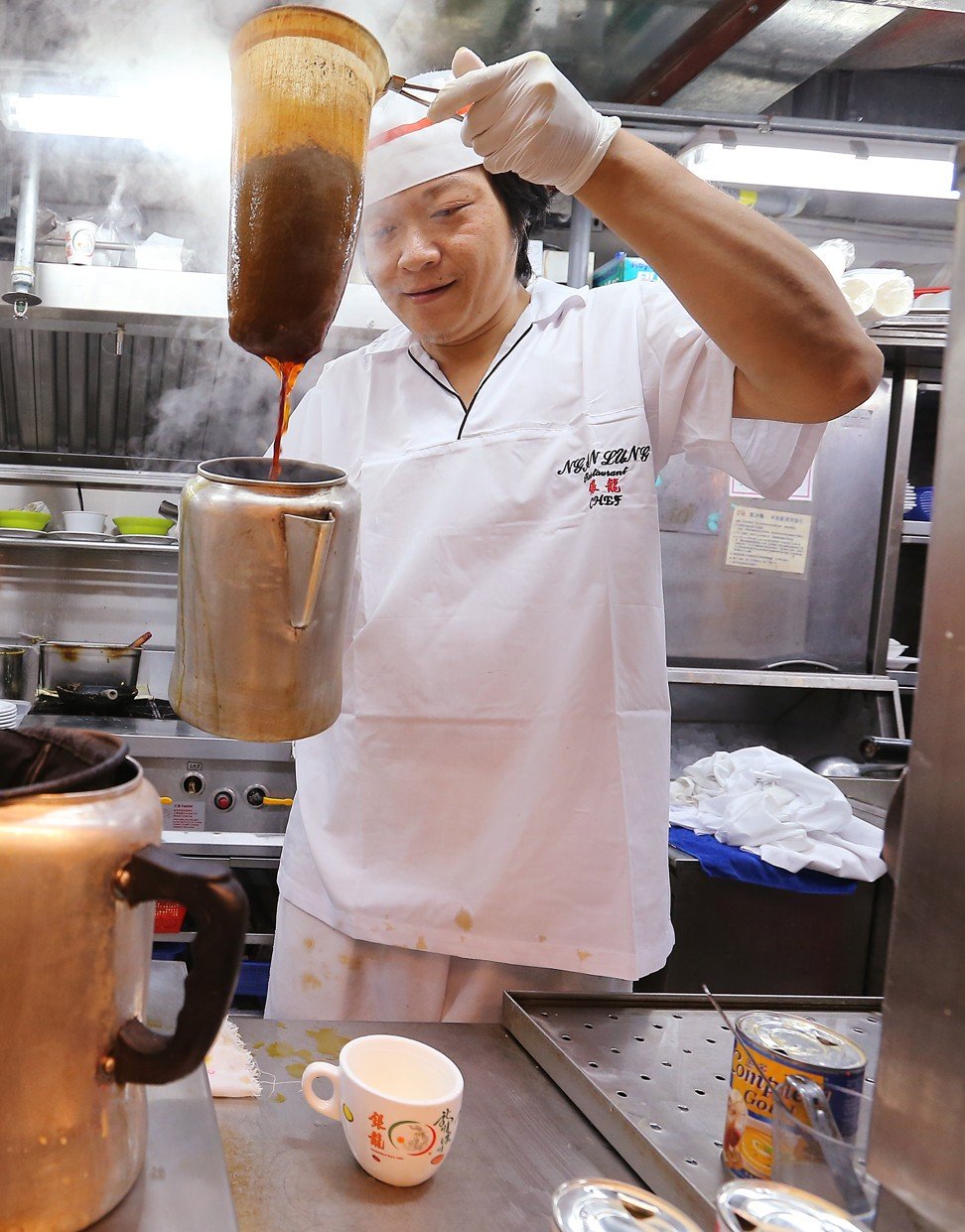
The water is poured from the kettle at a height of 60cm to ensure that enough pressure is applied to the leaves, allowing for an “even taste” and a “fragrant aroma”. The tea is then put back on the hotplate to bring it up to 94 degrees, where it can be kept for one hour.
“Pull too many times and the tea leaves will be over extracted, and if you don’t pull enough then the tea will lose its punchiness,” Tse says. The tea is served at the “golden ratio” of 70 per cent tea and 30 per cent evaporated milk, which brings the drink to the optimum temperature range of 55 to 60 degrees.
Each day, approximately 10,000 cups of milk tea are sold at the Ngan Lung cha chaan teng chain in Hong Kong. Executive director Tang Ping-hung says that translates to about 1,300 tins of Black&White evaporated milk being used at its 20 locations. Although milk tea can be now ordered at most restaurants in Hong Kong, it has always been at the core of the cha chaan teng business.
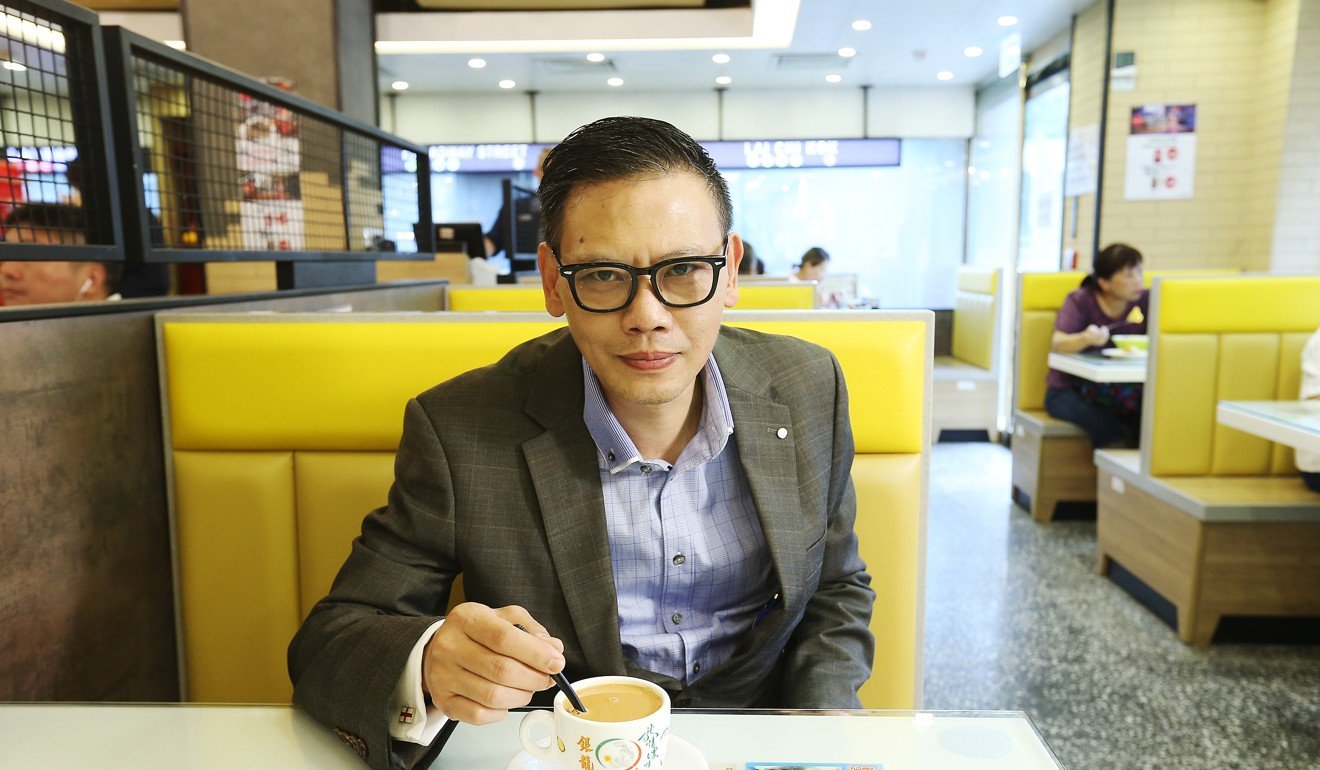
For Tang, the perfect cup of milk tea comprises nine elements: colour, taste, aroma, texture, temperature, taste of the milk, aftertaste, milk tea balance and thickness. “It’s even more sophisticated than wine tasting,” he says.
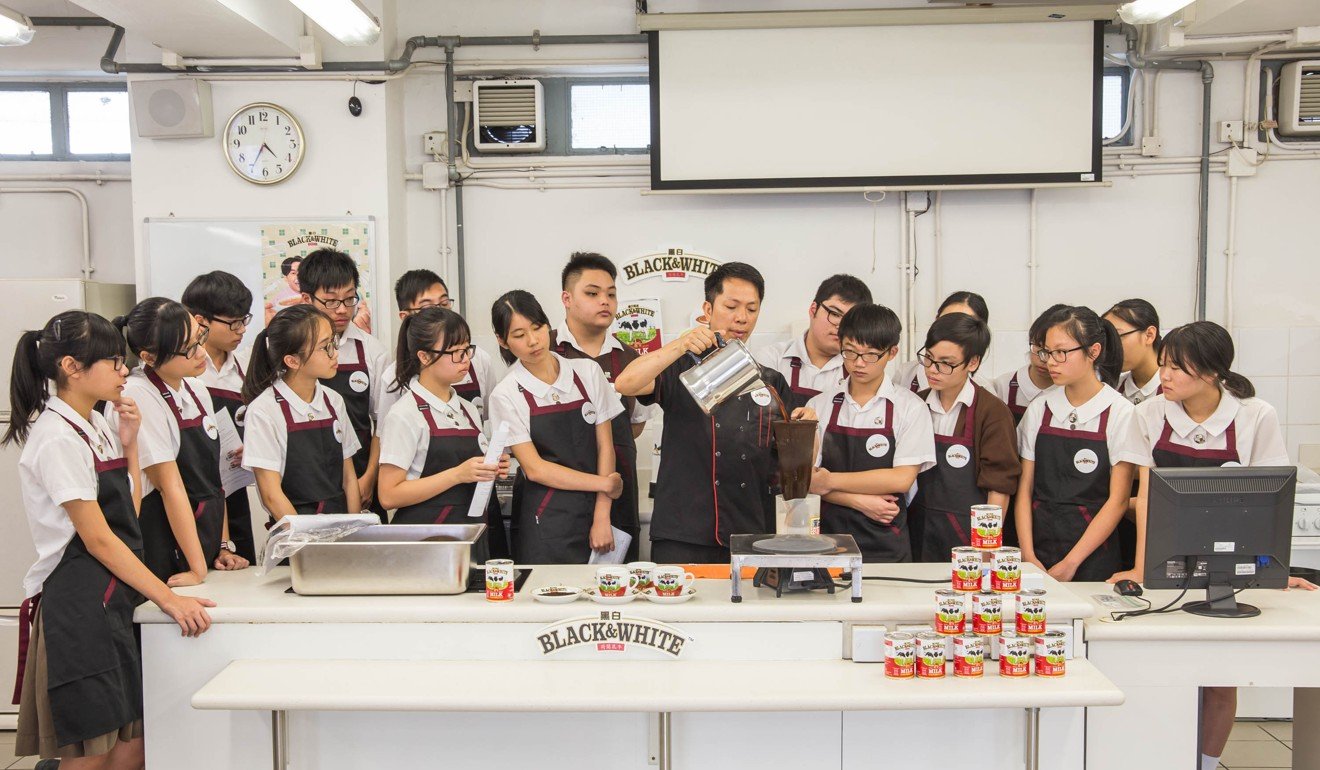
This year he has also been working with FCHK and the Evangelical Lutheran Church Social Service to teach high school students how to make milk tea. This weekend, students will put what they’ve learned to the test, selling their drinks to the public at Tai Po Mega Mall in the New Territories.
“Milk tea is critical to Hong Kong food culture and it has been part of every Hongkonger’s life, but it is at risk of disappearing. [Because of this] I am passionate about contributing my expertise to preserving and passing on the technique to the next generation,” he says.
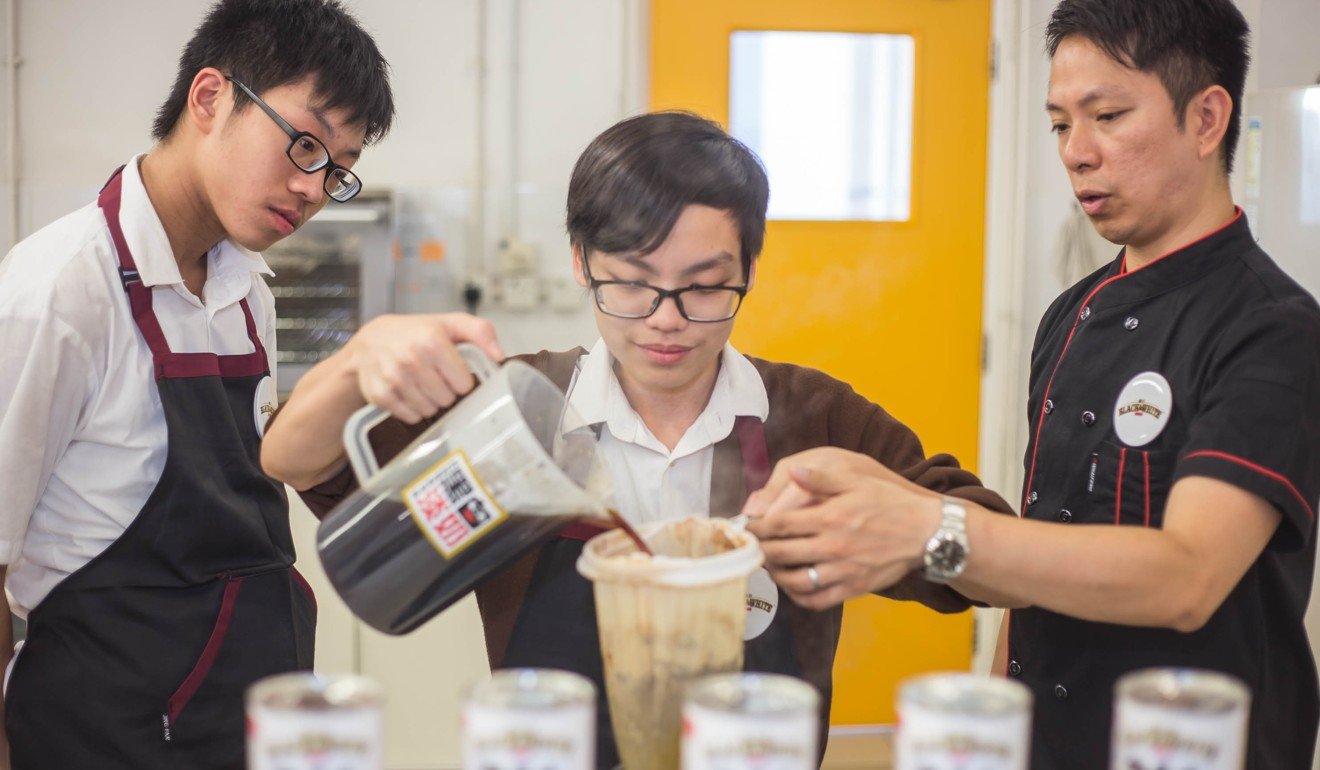
“[Young people] think the Western coffee shop is trendy. They think if they drink coffee they are much more cultural,” she says. But for Tong, coffee and milk tea are in different leagues. Despite each cha chaan teng varying its recipe, Tong says that across the board in Hong Kong, milk tea has a high standard, unlike its bitter coffee counterpart, with its taste dictated by the barista and the bean.
“I think milk tea is much more acceptable because it is sweet, it is easy to drink compared to coffee,” she says. What it comes down to is “[milk tea] is not a trend, it’s a staple”.